Ornamental Plant and Weed Response to Oxyfluorfen Plus Prodiamine.
Aulakh, J. S., Witcher, A., and Kumar, V. 2024. HortTechnology 34:227-233.
Ex-ante priority setting in crop breeding: Towards inclusive innovation for impact.
Occelli, M., Compaore, E., Brown, D., Barry, F., Poda, L. S., Traore, F., Waongo, A., Rubin, D., and Tufan, H. A. 2024. Agricultural Systems 217:103952.
A pollen selection system links self and interspecific incompatibility in the Brassicaceae.
Liu, B., Li, M., Qiu, J., Xue, J., Liu, W., Cheng, Q., Zhao, H., Xue, Y., Nasrallah, M. E., Nasrallah, J. B., and Liu, P. 2024. Nature Ecology & Evolution.
EPSPS gene amplification confers glyphosate resistance in Palmer amaranth in Connecticut.
Aulakh, J. S., Kumar, V., Brunharo, C. A. C. G., Veron, A., and Price, A. J. 2024. Weed Technology 38:e31.
Phylogenomics and the rise of the angiosperms.
Zuntini, A. R., Carruthers, T., Maurin, O., Bailey, P. C., Leempoel, K., Brewer, G. E., Epitawalage, N., Françoso, E., Gallego-Paramo, B., McGinnie, C., Negrão, R., Roy, S. R., Simpson, L., Toledo Romero, E., Barber, V. M. A., Botigué, L., Clarkson, J. J., Cowan, R. S., Dodsworth, S., Johnson, M. G., Kim, J. T., Pokorny, L., Wickett, N. J., Antar, G. M., DeBolt, L., Gutierrez, K., Hendriks, K. P., Hoewener, A., Hu, A.-Q., Joyce, E. M., Kikuchi, I. A. B. S., Larridon, I., Larson, D. A., de Lírio, E. J., Liu, J.-X., Malakasi, P., Przelomska, N. A. S., Shah, T., Viruel, J., Allnutt, T. R., Ameka, G. K., Andrew, R. L., Appelhans, M. S., Arista, M., Ariza, M. J., Arroyo, J., Arthan, W., Bachelier, J. B., Bailey, C. D., Barnes, H. F., Barrett, M. D., Barrett, R. L., Bayer, R. J., Bayly, M. J., Biffin, E., Biggs, N., Birch, J. L., Bogarín, D., Borosova, R., Bowles, A. M. C., Boyce, P. C., Bramley, G. L. C., Briggs, M., Broadhurst, L., Brown, G. K., Bruhl, J. J., Bruneau, A., Buerki, S., Burns, E., Byrne, M., Cable, S., Calladine, A., Callmander, M. W., Cano, Á., Cantrill, D. J., Cardinal-McTeague, W. M., Carlsen, M. M., Carruthers, A. J. A., de Castro Mateo, A., Chase, M. W., Chatrou, L. W., Cheek, M., Chen, S., Christenhusz, M. J. M., Christin, P.-A., Clements, M. A., Coffey, S. C., Conran, J. G., Cornejo, X., Couvreur, T. L. P., Cowie, I. D., Csiba, L., Darbyshire, I., Davidse, G., Davies, N. M. J., Davis, A. P., van Dijk, K.-j., Downie, S. R., Duretto, M. F., Duvall, M. R., Edwards, S. L., Eggli, U., Erkens, R. H. J., Escudero, M., de la Estrella, M., Fabriani, F., Fay, M. F., Ferreira, P. d. L., Ficinski, S. Z., Fowler, R. M., Frisby, S., Fu, L., Fulcher, T., Galbany-Casals, M., Gardner, E. M., German, D. A., Giaretta, A., Gibernau, M., Gillespie, L. J., González, C. C., Goyder, D. J., Graham, S. W., Grall, A., Green, L., Gunn, B. F., Gutiérrez, D. G., Hackel, J., Haevermans, T., Haigh, A., Hall, J. C., Hall, T., Harrison, M. J., Hatt, S. A., Hidalgo, O., Hodkinson, T. R., Holmes, G. D., Hopkins, H. C. F., Jackson, C. J., James, S. A., Jobson, R. W., Kadereit, G., Kahandawala, I. M., Kainulainen, K., Kato, M., Kellogg, E. A., King, G. J., Klejevskaja, B., Klitgaard, B. B., Klopper, R. R., Knapp, S., Koch, M. A., Leebens-Mack, J. H., Lens, F., Leon, C. J., Léveillé-Bourret, É., Lewis, G. P., Li, D.-Z., Li, L., Liede-Schumann, S., Livshultz, T., Lorence, D., Lu, M., Lu-Irving, P., Luber, J., Lucas, E. J., Luján, M., Lum, M., Macfarlane, T. D., Magdalena, C., Mansano, V. F., Masters, L. E., Mayo, S. J., McColl, K., McDonnell, A. J., McDougall, A. E., McLay, T. G. B., McPherson, H., Meneses, R. I., Merckx, V. S. F. T., Michelangeli, F. A., Mitchell, J. D., Monro, A. K., Moore, M. J., Mueller, T. L., Mummenhoff, K., Munzinger, J., Muriel, P., Murphy, D. J., Nargar, K., Nauheimer, L., Nge, F. J., Nyffeler, R., Orejuela, A., Ortiz, E. M., Palazzesi, L., Peixoto, A. L., Pell, S. K., Pellicer, J., Penneys, D. S., Perez-Escobar, O. A., Persson, C., Pignal, M., Pillon, Y., Pirani, J. R., Plunkett, G. M., Powell, R. F., Prance, G. T., Puglisi, C., Qin, M., Rabeler, R. K., Rees, P. E. J., Renner, M., Roalson, E. H., Rodda, M., Rogers, Z. S., Rokni, S., Rutishauser, R., de Salas, M. F., Schaefer, H., Schley, R. J., Schmidt-Lebuhn, A., Shapcott, A., Al-Shehbaz, I., Shepherd, K. A., Simmons, M. P., Simões, A. O., Simões, A. R. G., Siros, M., Smidt, E. C., Smith, J. F., Snow, N., Soltis, D. E., Soltis, P. S., Soreng, R. J., Sothers, C. A., Starr, J. R., Stevens, P. F., Straub, S. C. K., Struwe, L., Taylor, J. M., Telford, I. R. H., Thornhill, A. H., Tooth, I., Trias-Blasi, A., Udovicic, F., Utteridge, T. M. A., Del Valle, J. C., Verboom, G. A., Vonow, H. P., Vorontsova, M. S., de Vos, J. M., Al-Wattar, N., Waycott, M., Welker, C. A. D., White, A. J., Wieringa, J. J., Williamson, L. T., Wilson, T. C., Wong, S. Y., Woods, L. A., Woods, R., Worboys, S., Xanthos, M., Yang, Y., Zhang, Y.-X., Zhou, M.-Y., Zmarzty, S., Zuloaga, F. O., Antonelli, A., Bellot, S., Crayn, D. M., Grace, O. M., Kersey, P. J., Leitch, I. J., Sauquet, H., Smith, S. A., Eiserhardt, W. L., Forest, F., and Baker, W. J. 2024. Nature.


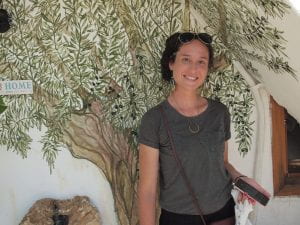 Kensy Rodriguez-Herrera is a second-year Ph.D. student in Chris Smart’s lab in Plant Pathology and Plant Micro-Biology. Kensy works on cucurbit yellow vine disease (CYVD) and focuses on studying plant host, pathogen, and vector to create a CYVD-integrated pest management program for NY growers.
Kensy Rodriguez-Herrera is a second-year Ph.D. student in Chris Smart’s lab in Plant Pathology and Plant Micro-Biology. Kensy works on cucurbit yellow vine disease (CYVD) and focuses on studying plant host, pathogen, and vector to create a CYVD-integrated pest management program for NY growers.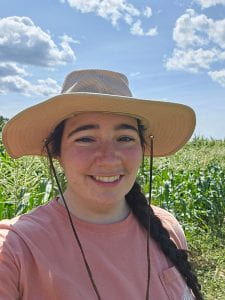 Savannah Dale is a Plant Breeding and Genetics Ph.D. candidate in the Gore and Van Eck Labs. She researches use of novel breeding approaches for improvement of vegetable and underutilized crops including improvement of sweetcorn fresh kernel nutritional quality and understanding herbivorous insect resistance in groundcherry.
Savannah Dale is a Plant Breeding and Genetics Ph.D. candidate in the Gore and Van Eck Labs. She researches use of novel breeding approaches for improvement of vegetable and underutilized crops including improvement of sweetcorn fresh kernel nutritional quality and understanding herbivorous insect resistance in groundcherry.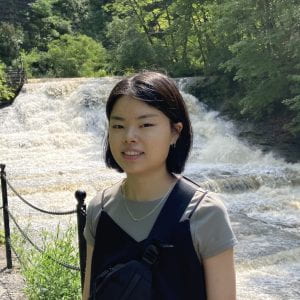
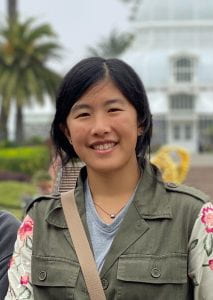

 Luna Rosa Natoli is a second-year Soil & Crop Science PhD student working in the labs of Dr. Enid Martínez and Dr. Olena Vatamaniuk. Her research focuses on metals bioavailability in soil, combining soil chemistry and molecular biology to explore the mechanisms that regulate plant micronutrient uptake.
Luna Rosa Natoli is a second-year Soil & Crop Science PhD student working in the labs of Dr. Enid Martínez and Dr. Olena Vatamaniuk. Her research focuses on metals bioavailability in soil, combining soil chemistry and molecular biology to explore the mechanisms that regulate plant micronutrient uptake.



 Mattew Fenn is a fourth-year graduate student in Plant Breeding and Genetics under the supervision of Drs. Jim Giovannoni and Michael Mazourek. His thesis research examines the genetics of fruit color and nutritional quality improvement in tomato and pepper.
Mattew Fenn is a fourth-year graduate student in Plant Breeding and Genetics under the supervision of Drs. Jim Giovannoni and Michael Mazourek. His thesis research examines the genetics of fruit color and nutritional quality improvement in tomato and pepper.
 Adele Woodmansee is a third year MS/PhD student in Soil and Crop Science, and she is part of Andrew McDonald’s research group. Her research looks at changing agriculture livelihoods and cereal diversity in the High Atlas Mountains of Morocco.
Adele Woodmansee is a third year MS/PhD student in Soil and Crop Science, and she is part of Andrew McDonald’s research group. Her research looks at changing agriculture livelihoods and cereal diversity in the High Atlas Mountains of Morocco.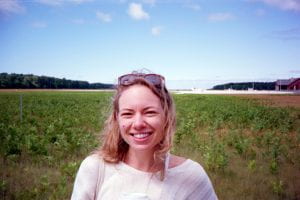 Hannah Zonnevylle is a first year PhD student in Dr. Daniel Katz’s lab. Her research focuses on assessing spatial and temporal variability in tree reproduction due to environmental conditions. She is interested in the intersection of public health and plant ecology, specifically how climate change impacts exposure to airborne pollen.
Hannah Zonnevylle is a first year PhD student in Dr. Daniel Katz’s lab. Her research focuses on assessing spatial and temporal variability in tree reproduction due to environmental conditions. She is interested in the intersection of public health and plant ecology, specifically how climate change impacts exposure to airborne pollen. The Annual Synapsis Seed Sale fundraiser has returned!
The Annual Synapsis Seed Sale fundraiser has returned! -Magdalen Lindeberg
-Magdalen Lindeberg -Magdalen Lindeberg
-Magdalen Lindeberg